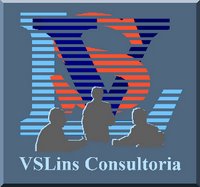Understanding
An instinct is a, response fitted to a special situation. The smell of a female moth entices the male moth from miles away. In first- or second-hand learning responses are also fitted to special situations. These become 'familiar' situations because one knows what to do about them. But what about new situations? What about unfamiliar situations which do not have any ready-made responses?
A strange woman appears on the doorstep. Immediately you try and put the situation into a familiar category to which you know the response. Is she carrying out some sort of poll? Is she trying to sell you a flag for charity? Has her car broken down? Has she just lost her way? Is she an old acquaintance whose face you have forgotten?
Understanding is the process of changing an unfamiliar process into a familiar one so that you know what to do about it. This changing around takes place in the mind as you go from one idea to another until the unfamiliar situation is seen to resemble or be derived from familiar situations. This going from one idea to another is thinking. Understanding is thinking.
If you see a white sheet flapping in the night it is frightening because it is an unfamiliar situation, but as soon as you can see it as a sheet on a washing-line then you know what to do nothing. In a foreign restaurant you try and relate the strange words on the menu to words you already know in order to understand what dishes are available. In the end you find that some of the most exotic names refer to very familiar dishes.
Understanding is a very powerful process because it is the means by which man multiplies his knowledge. He can only learn responses to a few special situations but through understanding he converts any number of new situations into already familiar situations and thus knows what to do about them at once (without having to develop a response through first-hand learning or ask for one from second-hand learning).
Advantages
- Understanding allows one to multiply learning by using old responses in new situations.
- With understanding you can explain new situations to other people so that they can choose their own responses instead of having to accept second-hand responses blindly.
Disadvantages
- Understanding is limited by the available old responses (or ideas) with which to explain the new situations.
- In trying to understand a new unfamiliar situation in terms of old ideas one may leave out a lot or distort the actual situation to make it fit the available ideas.
- It is usually possible to understand an unfamiliar situation in several altemative ways but one is apt to settle on the first way and believe this to be the only possible way.
- Different people may understand the same situation in quite different ways and act accordingly.
EDWARD DE BONO. Practical Thinking. Penguin Books. New York, 1971.


<< Home